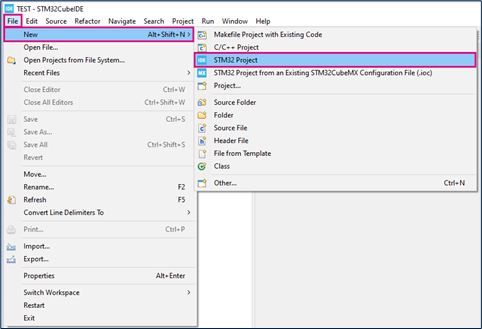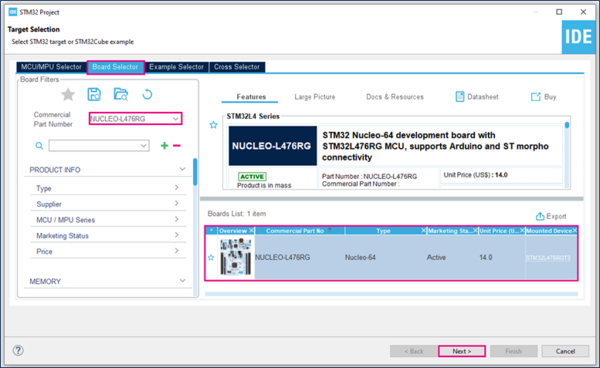| Coming soon |
This article explains what is SPI and how to use it through examples
1. What is a serial peripheral interface (SPI)
The Serial Peripheral Interface (SPI) is a synchronous serial communication interface specification used for short-distance communication, primarily in embedded systems. The interface was developed by Motorola in the mid-1980s and has become a de facto standard. SPI devices communicate in full duplex mode using a master-slave architecture usually with a single master. The master (controller) device originates the frame for reading and writing. Multiple slave-devices may be supported through selection with individual chip select (CS), sometimes called slave select (SS) lines.
2. Configure the SPI to communicate between.....
2.1. Objective
- File>New>STM32 Project in main panel.

In this example the NUCLEO-L476RG board is used to test RTC Alarm with interrupt.
- Select NUCLEO-L476RG board using Board Selector as shown in the below figure.

In case you haven't downloaded the STM32L476 Cube library, it will be downloaded automatically, it may take some time.
- Save the project.
[[category:Getting_started_with_STM32_system_peripherals | 15]]